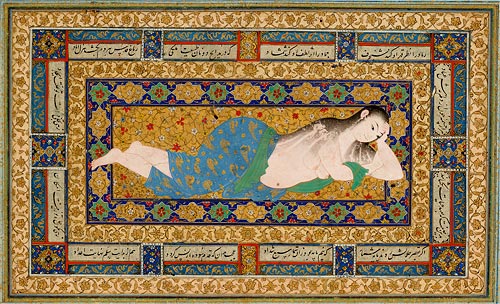
It may come as a surprise that in addition to its acclaimed collection of medieval and Renaissance illuminated manuscripts, the Morgan is also home to important Islamic manuscripts dating from the late middle ages to the nineteenth century. Treasures of Islamic Manuscript Painting from the Morgan marks the first time the Morgan has gathered these spectacular volumes together in a single exhibition.
On view are such treasures as a thirteenth-century treatise on animals and their uses that is regarded by some experts as one of the greatest of all Islamic manuscripts; single illuminated pages; Qur'ans; and an illustrated treatise on astrology, wonders of the world, demonology, and divination.
A rare illustrated translation of the life of Rumi, the celebrated Persian poet and mystic, reveals the special place of poetry in Persian culture. Also presented are six illustrated manuscripts of Nizami's Khamsa ("The Quintet"), which include depictions of the legendary tales of ill-fated lovers Laila and Majnun, the Persian Romeo and Juliet, as well as Iskander (Alexander the Great), and also Bahram Gur and the Seven Princesses.
The centrality of the Qur'an to Islamic life is represented by a large mosque Qur'an that takes center stage at the beginning of the exhibition. The earliest Qur'ans—beautifully handwritten on vellum and in oblong format—are shown along with later Qur'ans on paper and in vertical format.
Treasures of Islamic Manuscript Painting from the Morgan is organized by William Voelkle, Curator and Head of the Department of Medieval and Renaissance Manuscripts.
This exhibition is supported in part by a generous grant from The Hagop Kevorkian Fund and by the Janine Luke and Melvin R. Seiden Fund for Exhibitions and Publications.
A Young Lady Reclining After a Bath
Leaf from the Read Persian Album
Herat (Afghanistan), 1590s
By Muhammad Mu’min
MS M.386.5. Purchased by Pierpont Morgan, 1911
